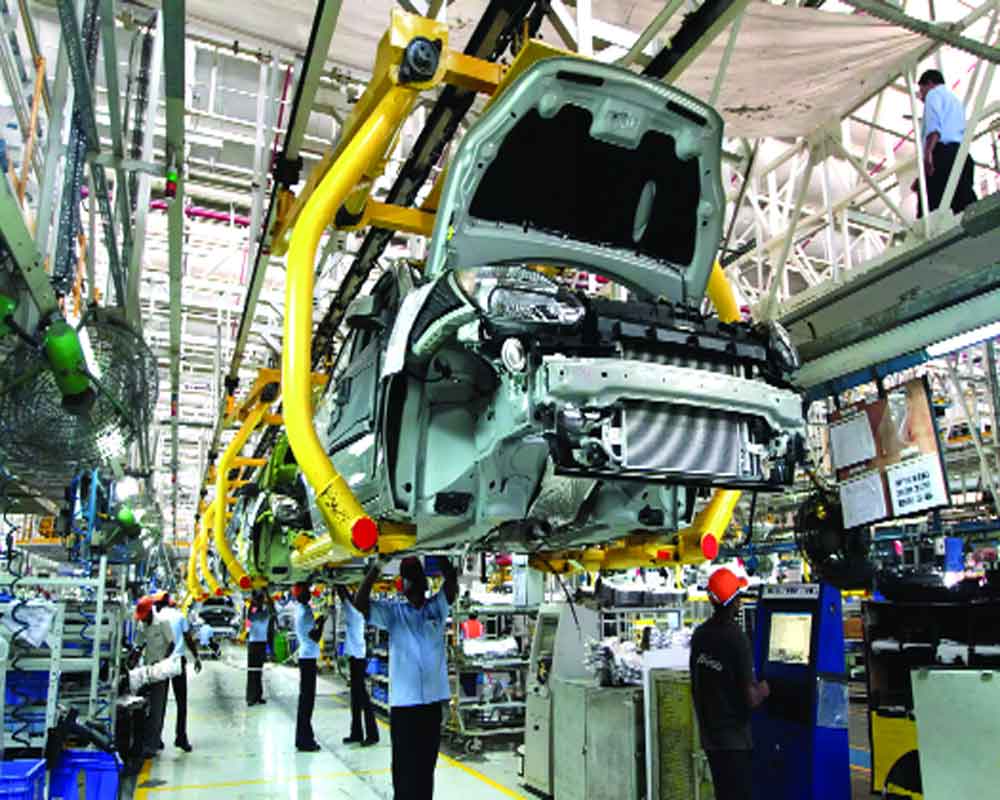The Indian automotive industry has crossed Rs 20 lakh crore mark in FY24 and now contributes 14-15 per cent of the total GST collected in the country, SIAM President Vinod Aggarwal said on Monday.
The auto sector also contributes significantly to the direct and indirect employment generation in the country, he said while speaking at the 64th annual ACMA session here.
“The Indian automotive industry has crossed a landmark figure of Rs 20 lakh crore (around USD 240 million) in FY24...We are contributing almost 14-15 per cent of the total GST collected in the country,” Aggarwal said.
The auto industry will contribute more and more to the GDP of the country from the current level of around 6.8 per cent, he noted.
It is not just the growth numbers, but equally important is the transformation in the technology, he added.
Aggarwal stated that globally also the standing Indian auto industry has risen.
“We have become the third largest passenger vehicle market, the largest two and three wheeler market and third largest commercial vehicle market as the country marches towards Viksit Bharat by 2047,” he noted.
The automotive industry is poised to grow even faster and contribute immensely to the growth of the country, Aggarwal said.
He stated that the auto industry has identified 50 critical components for local production in order to reduce import dependence.
Aggarwal said SIAM along with ACMA started the journey of enhancing indigenous manufacturing and has voluntarily set targets for increasing localisation.
“It was committed to reduce import content by 60 per cent to 20 per cent by 2025 from the base 2019-20 levels, thereby targeting the reduced reports to the tune of Rs 20,000 to Rs 25,000 crore in five years. We have very well achieved the first phase of import reduction of 5.8 per cent in first two years,” Aggarwal said at the ACMA annual session here.
In order to go to the next level and commence manufacturing of high tech critical items for which the industry has been dependent on imports, the industry has now identified a list of 50 critical components.
“We are encouraging ACMA members to commence manufacturing them in India to enable the vehicle OEMs to source these items locally,” Aggarwal said.
Since most of these items are electrical or electronics, there is a need to develop capabilities and capacities in India for such high tech items, he added.
Besides, having expertise in the conventional internal combustion engine technologies such as gasoline and diesel, the industry has now developed strong capabilities in multiple powertrains such as CNG and electrified vehicles such as electric vehicles and hybrids, Aggarwal said.
The industry is also developing hydrogen and fuel cell based technologies, he added.
“Going forward, as the aspirations of the country grow we have to focus more and more aggressively on cleaner and safer vehicles,” Aggarwal said.
“We are also thankful to the Ministry of Heavy Industries for identifying the need to develop the third automotive mission plan from 2024 to 2047 which will lay down the broad controls of how the industry is expected to grow over these years in three distinct phases, from now to 2030 from 2030 to 2037 and finally, 2037 to 2047,” he said.
The automatic mission plan will become a guiding document, not only for the entire automobile and the auto component industry for committing and planning the investments in the country, but will also serve as a ready reckoner for all the line ministries of the government of India, and also to many state governments for framing suitable policy measures that need to align with the growth and research for the auto sector, he noted.
“We look forward to the final document on the automotive mission plan,” Aggarwal said.
Speaking at the session, Automotive Component Manufacturers Association (ACMA) President Shradha Suri Marwah said the industry is looking forward to the third version of the automotive mission plan.




















